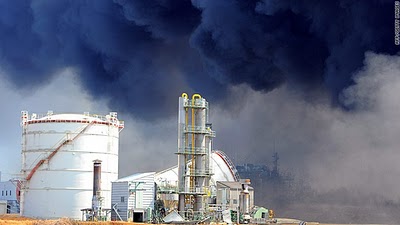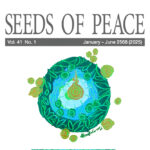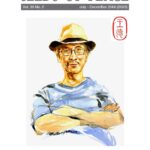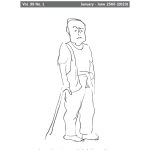An Interview with Rev. Jin Hitoshi
August 17, 2011
Rev. Hitoshi Jin is the Director of the Zenseikyo Foundation & Buddhist Council for Youth and Child Welfare and the Rinbutsuken Institute for Socially Engaged Buddhism. Since the tragic triple disaster in northern Japan on March 11, he has adapted his skills in psycho-spiritual counseling for troubled youth and the suicidal to helping all those in the disaster stricken areas struggling with trauma and grief. Rev. Jin has been making extended visits to the three prefectures Fukushima, Miyagi, and Iwate that were directly hit by the tsunami.
Since the tragic events of March 11th, the relief activities of numerous Buddhist denominations, their youth associations and other smaller denominational groups, individual temples and individual priests, and Buddhist based NGOs have been quite well documented. In the hardest hit areas, Buddhist temples have acted as short and long-term shelters for those left homeless by the tsunami. In Ishinomaki City in Miyagi prefecture, 4 out of 68 shelters are Buddhist temples, including the Soto Zen temple Dogen-in which was taking care 134 people at the end of April and still had about 80 people in June. In Kesenuma City, also in Miyagi, 6 out of 77 shelters are Buddhist temples. Buddhist priests not only in the disaster-hit areas but also in other parts of the country have been very active to hold regular memorial services for those who perished in the disaster. As honoring the dead and revisiting grief through Buddhist memorial rites is a cornerstone of Japanese spirituality, Buddhist priests have played an important role in helping many people face the massive grief brought on by the disaster.
?


While Rev. Jin has been active in such memorial services in the disaster areas, he has been more principally focusing on offering direct psycho-spiritual care for those still struggling with rebuilding their daily lives in these areas. Under the auspices of Zenseikyo, he conducted three emergency training sessions in May for volunteers who wanted to help out in the disaster areas. In total, they have drawn 50 volunteers, 90% of whom are Buddhist priests from various denominations and the remaining being temple family members and lay people. In such a short period, these volunteers were given basic training in 1st phase emergency counseling and support work.
This 1st phase has sought to deal with the initial trauma after the disaster and adjustment to new lives in the shelters. In this way, the emphasis is on supporting people through camaraderie and natural conversation rather than direct intervention or inquiry into their trauma. When formal activities are held, they are in the form of peer counseling in groups of people with the group leader acting as an active listener rather than a psychological counselor. However, much of the work is done in a more informal style through sharing time and conversation over tea and snacks. There have also been many activities for children who may become bored and frustrated with the constraints of life in the shelters. Many volunteers have spent time with them doing ?play therapy? through balloon art and providing punching bags on which they can take out pent up frustrations. Zenseikyo held a 3-day summer camp in August in Kurihara in northern Miyagi for 100 kids from the shelters. Many other groups have started doing similar such camps, including the Buddhist NGO AYUS which held a camp in Yamanashi next to Mt. Fuji in mid-August.
Many different Buddhist groups have been engaged in this level of psycho-spiritual care, such as the Buddhist Counseling Group of the Jodo Pure Land denomination?s Ho-on Meishokai Foundation based at Zojo-ji temple in Tokyo consisting of about 20 counselors and priests, and the Soto Zen Youth Association which has set up Monk (bozu) Caf?s for adults to talk over tea. There are also examples of local temples engaged in such work, such as the Jodo temple Sainen-ji in Ishinomaki where the female abbot and her mother use the means of delivering fish to various homes as a way to engage in conversation and support for people in the community. Unfortunately, the main headquarters of the major denominations have not been able to mobilize much consistent institutional support for this kind of work. Indeed, some have shown more concern with rebuilding their own temples in the region. This situation is in keeping with the general trend towards social engagement by Buddhists before the March disaster. In general, denominational headquarters have exhibited little initiative and foresightedness to engage in meaningful social activities that deal with the real suffering of people. Meanwhile, individual priests have gone ahead and started their own initiatives, and on some social issues have started building networks either within their denominations or across denominations.


One of the special activities that Rev. Jin and Zenseikyo have been involved in is mobilizing the Japan Association of Biwa Onkyu Treatment Providers (??????????) a group based in Kumamoto prefecture in southern Japan that specializes in a special form of moxibustion called onkyu (??) based on ancient Buddhist Aryuvedic methods. Onkyu involves the heating of acupressure points and meridians through medicinal herbs, in this case the leaves of the Japanese biwa tree, which release the healing properties of the herb into the bloodstream. The elderly, who make up a large portion of the population in the disaster areas, have been the special object of this work. The treatment has served as both a substitute care for people who after the disaster have not been able to get their regular medicines and also as preventative medical and psychological care. Being sequestered in shelters for long periods of time have exacerbated the health problems of the elderly who are not able to get enough r
egular exercise and also suffer from stress that induces high blood pressure, heart attack, and stroke. This onkyu therapy helps to support both their physical and psychological stress.
The 2nd phase of this psycho-spiritual counseling is the more intensive one-on-one work dealing with the more long-term effects of the trauma in individuals? post traumatic stress disorder (PTSD), depression, and suicidal tendencies. This is very difficult work to initiate with local people in the disaster areas because of communication barriers due to their heavy dialect, the insular nature of their rural communities that do not open up easily to outsiders, and the lack of long-term counselors who can build trust with these people. Slowly, Rev. Jin is beginning to shift the work from 1st phase shock and adjustment care to 2nd phase trauma and grief care. In October, Zenseikyo plans to begin establishing Sunday schools in the shelters, where children can access trauma counseling. At the same time, they will begin setting up more Monk Caf?s to offer support for adults as prevention for suicides and dying alone. One Rinzai Zen monk involved in suicide prevention work has estimated the suicide rate in Japan will soar beyond its chronic number of 30,000 annually upwards to 40,000 this year due to the trauma and destruction of livelihoods in the tsunami hit regions.
This 2nd phase level of psycho-spiritual work has more quickly proceeded amongst the large volunteer and care community that has entered the region since the disaster. Relief workers and care givers (such as those working in refugee shelters), temple people who have offered their temples as shelters, doctors and medical workers, and especially Self-Defense soldiers who have had to recover so many corpses, have suffered from exhaustion, burnout, and trauma in their work. Rev. Jin has especially worked with local priests and temple people who have needed support during this time. However, amongst his group of counselors there are only 2-3 people qualified to do such 2nd phase counseling work that requires professional skills and experience.
There is certainly potential for Buddhists to be more involved in this 2nd phase of psycho-spiritual work. Over the past 10 years, more Buddhists (priests and temple family members alike) have become interested in developing counseling skills. The aforementioned Jodo Buddhist Counseling Group is a representative example. There is also a network of priests that has been engaging in suicidal counseling for the past five years or so. In addition, there are priests, especially in the Jodo Shin denomination, who have developed counseling skills as chaplains for the dying and bereaved. Both Rev. Jin and Prof. Iwayumi Suzuki of Tohoku University in Sendai have called for the development of chaplaincy training programs for Buddhist priests in part to meet this most critical need in the disaster areas. At present, there is no systematic training system to develop chaplains run by any of the large Buddhist denominations. There exist only a few small private initiatives by concerned clergy of both Buddhist and Christian backgrounds. Rev. Jin is now looking into adapting models of Buddhist chaplaincy training already highly developed outside of Japan, such as in Taiwan and the United States.
Even if there were a large cadre of such Buddhist chaplains, Rev. Jin says that the biggest problem at this time is the coordination of needs and services. There are not enough people right now who act as coordinators to match skilled people to the areas where their skills and background are most appropriate. In this way, Rev. Jin is planning to set up a dispatch center in Sendai City by mid September for Buddhist psycho-spiritual counselors to better coordinate such work. Finally, there is a need for counselors and care givers to commit to the region. Because of the aforementioned barriers to these local communities and the basic intimacy needed to do such counseling work, counselors cannot come from other regions of Japan for 2-3 days at a time and expect to be of much help. In this way, the most effective means would be to train local Buddhist priests and family members in such counseling skills. As in the aforementioned case of the Jodo nun in Ishinomaki, such local priests and temples have long established ties to their communities and can most readily offer the kind of psycho-spiritual support they will need in the coming years.
Jonathan Watts
International Buddhist Exchange Center, Yokohama






